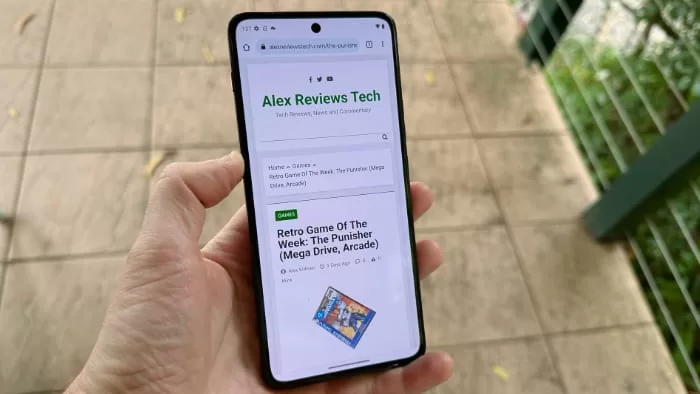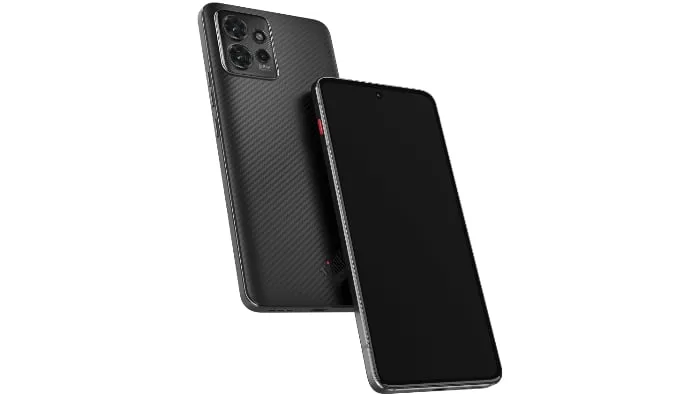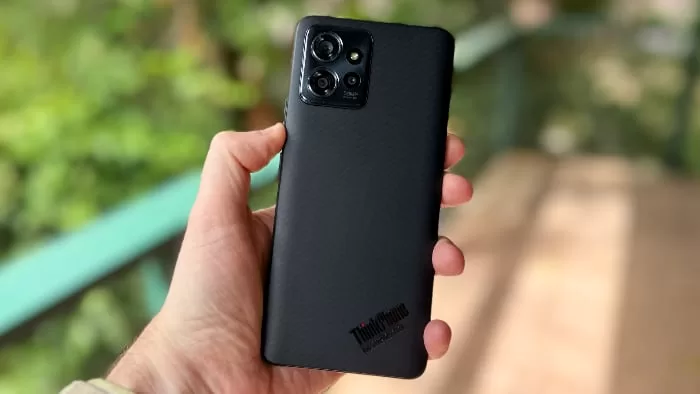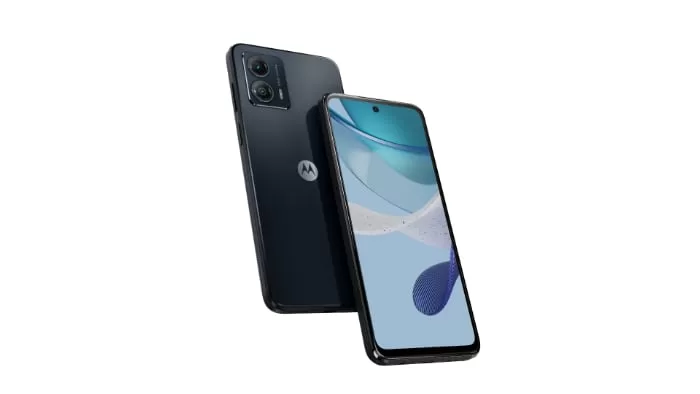Motorola’s ThinkPhone is coming to Australia, along with a pair of budget-centric Moto phones, albeit a little later than the rest of the world.
Lenovo’s ThinkPad is something of a stalwart of the laptop world – and I’ve been doing this tech journalism thing long enough that I can solidly remember back when ThinkPad was an IBM brand.
So it’s something of a no-brainer that Motorola – specifically Motorola Mobility, the smartphone bit of Motorola that Lenovo’s owned ever since it bought it from Google – would leverage that brand identity for a smartphone.
Which it did with a phone announced earlier this year that’s now making its way to Australian shores.
That’s the ThinkPhone by Motorola. To keep it simple, I’m just going to call it the ThinkPhone, because while I appreciate the branding play, that’s a lot easier to type.
When will the ThinkPhone be available in Australia?

The Motorola ThinkPhone will go on sale in Australia from the 30th of March, through Lenovo’s online store and JB Hi-Fi.
But because it’s already been available in other markets, it’s already available through Amazon as well if you’re keen. Pricing may vary a bit from local pricing, however.
How much does the ThinkPhone cost in Australia?
The ThinkPhone will retail in Australia for $999 outright.
There’s no announced plans for carriers to offer it on contract terms, though.
What’s interesting about the Motorola ThinkPhone?

The design first and foremost. It’s very much patterned on that classic ThinkPad look, down to red signature accents on the app key sitting on the top left hand side. At the back there’s an Aramid Kevlar designed backplate with an embossed ThinkPhone logo, too.
The ThinkPhone features a 6.6 pOLED display with support for up to 144Hz refresh rate, sitting behind a Gorilla Glass Victus display. It’s IP68 rated for water ingress, but that’s all but standard for flagships these days.
The ThinkPhone runs on the Snapdragon 8 Gen 1 processor, an interesting call for Motorola given the Gen 2 is this year’s premium Snapdragon play. No doubt that’s down to the fact it was designed last year when the Gen 1 was the current flagship.

The ThinkPhone is 5G capable with dual physical SIM slots, but annoyingly it’s not mmWave capable, which means that the Google Pixel 7 Pro remains your best mmWave bet in Australia. It sure would be nice if more phone makers got on board there.
The model sold in Australia will feature 8GB of RAM and 256GB of storage capacity, running Android 13 with the promise of three years of OS upgrades and four years of security upgrades. Security upgrades will be monthly for the first three years, and then every two months in that final fourth year.
On the camera front, it’s a less premium play, because this is pitched as more of a business phone, really. At the rear there’s a 50MP f/1.8 primary camera, backed up with a 13MP f/2.2 ultrawide camera. At the front, you’ll be capturing all those precious business selfies with a 16MP camera lens.
For power, it’s packing in a 5000mAh battery with support for 68W wired charging and 15W wireless charging. One nice feature here is that Motorola is supplying a charger in the box with the ThinkPhone.
All of which fits the bill, and to a reasonable extent the price tag, but where Motorola wants to particularly sell is to businesses.
As such, alongside standard Android there’s a slew of security features, with productivity tools to pair to a Windows PC (sorry Mac users, not for you) and security and encryption tools for particularly sensitive data.
Alex’s Take

I do like the ThinkPad design, and it transfers very nicely to a handset in a visual sense. I can see the appeal to businesses in having a more secure phone as well.
However, this is a niche phone, and it’s not as though we haven’t seen this kind of play before. Remember when BlackBerry went Android with secure business phones?
The rest of the package is fine in theory, but the proof will be in how it actually performs at that price.
At $999 it’s nicely below the “true” flagships it’s somewhat competing with — it’s not even Motorola’s most expensive phone by quite a wide margin — but with last year’s Snapdragon 8 Gen 1 phones coming down in price rapidly, you may be able to get more consumer-centric phones for even less quite soon.
Motorola has loaned me a ThinkPhone to review, so stay tuned here for that full review.
The ThinkPhone isn’t Motorola’s only new handset coming to market either. It’s also introducing two new budget centric models — the Motorola G53 and the Motorola E13.

When will the Moto G53 be available in Australia?
The Motorola G53 will be available in Australia from the 8th of April for outright purchase, or from the 26th of April as a Telstra prepaid phone.
How much does the Moto G53 cost in Australia?
The outright purchase model will cost $329 in Australia. Telstra’s prepaid model will be a little cheaper at $269.
While I haven’t confirmed this, smart money says that Telstra handset is single SIM only — telco phones nearly always are — and likely locked to the Telstra network.
What’s interesting about the Motorola Moto G53?
Compared to the ThinkPhone, the Motorola G53 is a much more regular Android smartphone, although its spec sheet does suggest that — like much of Motorola’s output — it’ll be a decent value play.
Your $329 buys you a phone running on a Snapdragon 480 processor with 4GB of RAM and 128GB of storage. The display is a 6.5 inch IPS LCD with support for up to 120Hz, running off a 5,000mAh battery. Unlocking is via a side mounted fingerprint scanner. It’s not water resistant, just “water repellant” with an IP52 rating.
One interesting quirk here is that the model of the G53 we’ll see in Australia is dual SIM by way of single sim plus eSIM, which isn’t common at this price point.
Alex’s Take
I’ve long been a fan of Motorola’s G series phones. They’re rarely truly “exciting” phones in their category, but they usually are good solid workhorse phones for everyday use.
The fact that we’re only getting the 4GB model in Australia — some international models have 8GB — isn’t pleasing, but I’ll have to wait and see how it actually runs to see how much impact that choice has.
If you don’t have the cash to manage the Moto G53, there’s also the Motorola Moto e13.
When will the Moto e13 be available in Australia?
The Moto e13 will be available in Australia from the 1st of May through Optus Prepaid, or from the 9th of May through Telstra Prepaid.
At launch, there’s no announced plans for direct sales in Australia.
But again these aren’t “new” handsets, and they’ve been available internationally already. So for example, if you want to buy one through Amazon, they’re already available.
How much will the Moto e13 cost in Australia?
The Moto e13 will cost $149 through either Optus or Telstra.
What’s interesting about the Motorola Moto e13?
To the shock of absolutely nobody, $149 buys you a much more moderate handset. You’ll get a 6.5 inch IPS LCD display in a “cosmic black” plastic frame, running Android 13 Go.
The Australian model will have 2GB of RAM (there is an international 4GB model) with 64GB of onboard storage, expandable via microSD.
On the camera front, you get a rear 13MP camera and front-facing 5MP sensor, most likely only good for clear daytime shots. Again, that’s in line with the budget price.
All of this relies on a Unisoc T606 processor, which is an absolute budget part built for budget phones. Don’t expect the Moto e13 to fly in performance terms, in other words.
Where it might fly is in battery life with a 5,000mAh battery on board. Having a slower processor does have the advantage there of not hitting the battery too hard, at least in theory.
The e13 is a 4G-only handset — nobody is yet doing 5G at this price — but the Australian model is apparently unique in that it supports up to CAT6 connections.
This doesn’t mean that it’s full of felines, but instead that it could (in theory) maximise the download speeds of 4G networks. Plenty of other cheap phones tend to have very slow 4G modems.
Alex’s Take
The e13 is a cheap phone, and those absolutely have their place. If you need a basic communicator on the cheap, it could be alright, though I’ll have to wait until I test it out to see where it makes the most sense.
I wouldn’t get too excited about that CAT6 capability, however. It’s nice to have, but the reality of mobile networks is that the bottleneck is more likely to be environmental (thick walls, metal, other radio waves) and network conditions more than phone capabilities.
For some providers, especially MVNOs, there are also speed limits in place that would make CAT6 moot.

